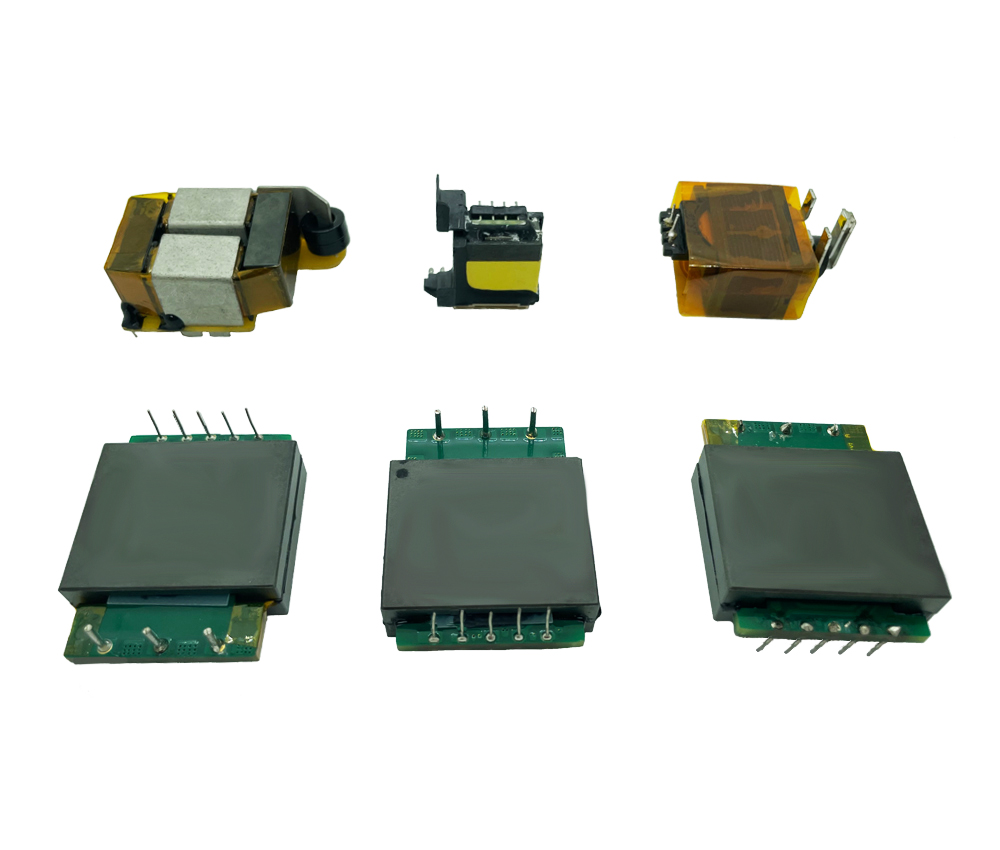In the world of modern power electronics, planar transformers are emerging as a key solution to meet the increasing demands for high efficiency, compact size, and greater power density. As industries ranging from telecommunications to automotive continue to push for more energy-efficient and compact designs, the rise of planar transformers in modern power solutions is positioning them as the ideal choice for next-generation power systems.
What is a Planar Transformer?
A planar transformer differs from traditional transformers by using flat, laminated conductors and a planar magnetic core. This design allows for a significant reduction in the height of the transformer, making it ideal for applications where space is a critical factor. The winding layers are etched onto printed circuit boards (PCBs) or stacked together in a planar configuration, enabling a compact structure while maintaining excellent electrical performance.

Advantages of Planar Transformers in Modern Power Systems
The shift towards planar transformers is largely driven by the demand for higher power densities, which they can deliver more efficiently than conventional wire-wound transformers. Here are some of the advantages that make them the preferred choice for many industries:
- Compact Size: The planar design allows for a lower profile and smaller footprint, making them perfect for high-density power applications where space is limited.
- High Efficiency: Due to their planar construction, these transformers exhibit lower leakage inductance and reduced AC resistance losses, resulting in higher efficiency, especially at high frequencies.
- Improved Thermal Management: The planar structure enhances thermal performance by providing better heat dissipation, which is crucial for power applications with high current loads.
- Scalability and Integration: With their PCB-based design, planar transformers are easily integrated into automated manufacturing processes. They also offer the potential for scalable designs, allowing for customized planar power solutions.
Expanding Applications in Telecommunications and Electric Vehicles
As industries advance, the demand for planar transformers is rapidly expanding across sectors like telecommunications, automotive, and renewable energy. In the telecommunications industry, for example, the push for faster data speeds and greater bandwidth requires more compact and efficient power solutions. Planar transformers meet this need by providing the necessary power in a smaller, more efficient package.
Similarly, in electric vehicles (EVs) and renewable energy applications, the ability to deliver high power density and efficiency is critical. Compact planar power transformer surface-mount planar magnetics offer the perfect solution by minimizing space requirements while improving overall system efficiency. As EV technology evolves, the need for compact, high-performance power conversion systems is becoming more apparent, and many kinds of planar transformers are playing a crucial role in this evolution.

Challenges and Innovations
While planar transformers offer numerous advantages, there are also challenges that manufacturers must address. One of the primary concerns is cost. The design and production of planar transformers require more complex materials and manufacturing processes than traditional transformers, which can lead to higher upfront costs. However, as demand increases and production methods improve, costs are expected to come down, making planar transformers more accessible to a broader range of applications.
Innovations in material science and manufacturing techniques are also driving the development of more advanced planar transformers. New magnetic materials and advanced cooling techniques are allowing for even higher efficiency and power density, making planar transformers more attractive to industries looking to push the boundaries of power conversion technology.
The Future of Power Conversion
With the growing emphasis on energy efficiency and miniaturization in electronics, planar transformers are set to play a pivotal role in the future of power conversion. As industries like telecommunications, electric vehicles, and renewable energy continue to innovate, planar transformers will remain a vital component in achieving higher performance, compact design, and greater reliability.
Whether you’re in telecommunications, automotive, or industrial electronics, exploring the benefits of planar transformer technology is key to staying ahead of the curve in power solutions. Send inquiry to learn more about how these advanced transformers can transform your power systems.
Post time: Sep-19-2024







